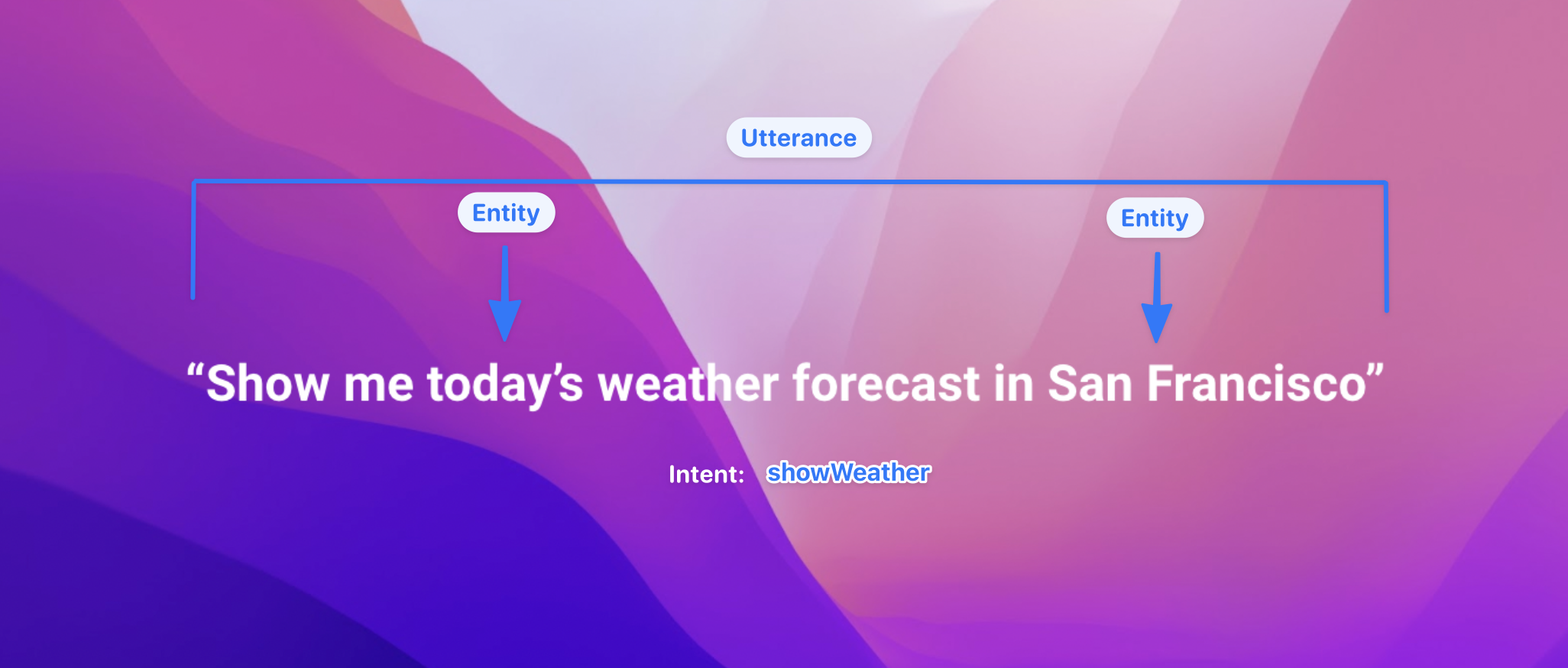Intents vs Entities
What are Intents? What are Entities? How do Intents and Entities differ?
Before we dive deeper into managing your conversation model, it's important to set a baseline understanding of the conversational components and fundamentals that will allow you to build dynamic, non-linear conversations.
This can be best explained with a conceptual example: “What cake do I buy for my birthday?”
On analyzing the above statement, we can understand two basic things:
- The person is interested in buying a cake
- The occasion is a birthday
The former is the Intent, the latter, an Entity. These are the building blocks for most conversation queries.
Now, imagine you run a bakery, you might not just be selling cakes; you might also sell muffins, cookies, breads, and much more. In that case, you would want to add two or more Entities with the Intent of buying.

In the graphic above, we can understand that the user’s intention is to access the weather.
To break it down further, let’s define a few terms.
- Intent — Intention, or purpose of the user in the conversational flow
- Entity — A data point or value which you can extract from a conversation (and can be slotted into a category/type)
- Utterance — The input(s)/response that your end-users provide to your conversational experience
Your conversational interface will derive intents and entities from utterances.
The difference between an Intent and Entity is that the intent is the goal that your user has when they’re sending a message to your conversational experience, while the entity is the modifier that your user makes use of to describe their query.
Alternatively, the Intent is an action that the user wants to perform, and the Entity is a keyword that you want to be extracted from the user’s utterance.
The Trigger step (which used to be known as the intent step) can be used to jump around workflows and through the conversation flow when intents are uttered by users. You can learn more about it here.
Therefore, while developing and designing a flexible and dynamic conversation, user/customer intents and entity recognition is crucial.
Updated 3 months ago